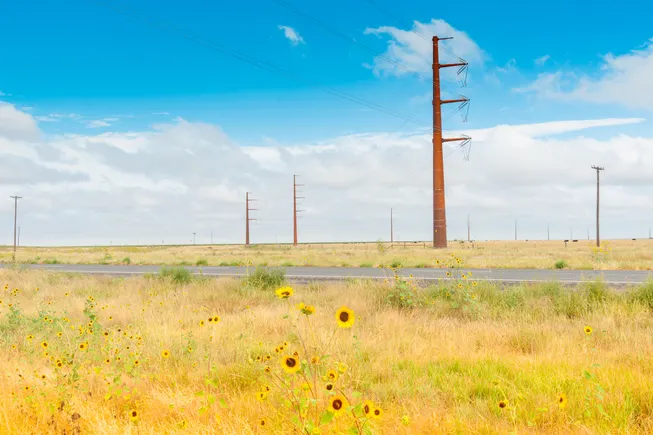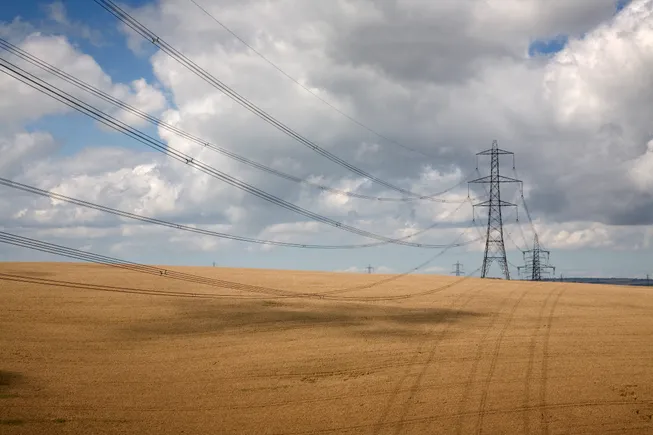Hard to Find in Europe, These Old-World Varietals Define South American Wine
From Malbec to Carmenère, these varietals have won over the hearts and vineyards of South American winemakers (and wine lovers). [...] Read More... The post Hard to Find in Europe, These Old-World Varietals Define South American Wine appeared first on Wine Enthusiast.
Since the arrival of Spanish settlers in the 15th century, South American producers have nurtured lesser-known European grape varieties, like Listán Prieto. Initially focusing on those from Spain, they later embraced French and Italian varieties, such as Malbec and Sangiovese, many of which were introduced in the 19th century.
In more recent years, winemakers have successfully revived grapes—one of which was believed to be completely extinct—that could have otherwise faded into obscurity.
These innovative producers have proven that in skilled hands, and on the right site, any grape can shine. They’ve also managed to honor and revitalize their deep-rooted viticultural heritage, while leveraging their pre-phylloxera vines.
These vines have a historical value, which makes them unique and worthy of preservation. It also helps that the careful winemakers who work these grapes make some incredibly impressive expressions.
To fully appreciate the dedication of the South American producers who’ve been working hard to revitalize these age-old varietals, we’ve rounded up five European grapes that are rare in their homeland but truly thrive in South America.

Malbec
Malbec stands out as a prime example of a French grape that has been successful in South America. Introduced in 1853—pre-phylloxera—Malbec has adapted so seamlessly to Argentina’s terroir that it seems to have lost its roots.
Originating in Cahors, France, and once a key player in Bordeaux blends, Malbec has found a new identity in South America, producing exceptional wines particularly in Mendoza’s high-altitude vineyards.
The region’s continental climate is influenced by the Andes Mountain range, which acts as a barrier for the humid Pacific breezes coming from Chile. Additionally, the high altitude creates a large diurnal temperature shift allowing the grapes to ripen slowly, resulting in flavorful wines with great acidity and smooth tannins.
This is a stark contrast to the lower altitude, continental-mediterranean climate of its French homeland. Cahors experiences far more rainfall than Mendoza—over 27 inches compared to just seven. And it is known to produce wines with gripping tannins, which are usually blended with Merlot and other varieties.
In Argentina—where the vast majority of vines are planted on their own roots—Malbec is a single-varietal star. It ranges from fresh and vibrant to bold, with rosé and white Malbec (red grapes vinified as a white wine) offering unique alternatives.
Not only are these wines exceedingly well made, they’re often incredibly affordable, too—an equation that contributes to its global success.
“Malbec has given consumers the possibility to drink a remarkable wine at a price point that was previously not possible,” says Alejandro Vigil, head winemaker at Catena Zapata. “It was surprising to find wine of exceptional quality at a great quality-to-price ratio. This was the reason Malbec was able to expand to new markets.”
As the popularity of Malbec has skyrocketed, so has the quality. Many in the know drinkers are now willing to pay just as much for a highly-rated Malbec as they are a bottle of Bordeaux.

Bonarda Argentina
Originating from the cool-climate France‘s Savoie region, where there are only a few hectares left and the wine is used for blending, Bonarda Argentina arrived in South America by the late 19th century.
Today, it is Argentina’s second-most-planted red grape variety.
Bonarda Argentina has a long ripening cycle and generous yields. The vast majority of vines are concentrated in Mendoza’s eastern region, where they grow at a low altitude for the country’s standard.
“It thrives in warm regions like the east, producing fresh, fruit-focused and juicy wines,” says Sebastian Zuccardi, director of winemaking at Familia Zuccardi.
Now, however, great samples can be found in cooler, high-altitude vineyards, as well.
“When we move to cooler regions like the Uco Valley, the wine gains fresh, red fruit characteristics, with higher acidity and enhanced tannic structure,” he adds.
Winemakers like Zuccardi often ferment and age Bonarda Argentina in concrete vats, and avoid the use of oak barrels because it’s a delicate grape. Nevertheless, lightly oaked Bonarda wines can also be found in the market. Additionally, some producers employ carbonic maceration to create light-bodied, aromatic wines that highlight its fruit-forward character.

Carmenère
In the late 19th century, European winemakers introduced Carmenère to Chile. Initially mistaken for Merlot, the grape was known as Merlot tardío by Chilean producers due to its long ripening period. However, in 1994, French ampelographer Jean Michel Boursiquot identified it as Carmenère, a variety originally from Bordeaux that was long believed to be extinct.
Today, there are just 20 hectares of Carmenère in all of France.
Chile leads global Carmenère cultivation, with over 24,000 acres and lots of expertise in growing it, which has led to the discovery of premium sites. The Apalta and Peumo Valleys stand out as the most celebrated regions.
“Carmenère requires time to fully ripen to make high-quality wines,” says Marcio Ramirez, winemaker at Concha y Toro. The Peumo’s Valley hills filter the Andes breezes, creating ideal conditions, while solar radiation and careful, gradual leaf removal ensure balanced ripening, avoiding intense pyrazine notes (that green pepper flavor) in the wine, and prevent sunburn.
Like Peumo, the Apalta’s Valley warm weather is crucial to achieve excellent grape ripening and flavor development, while granitic soils retain enough water to support the vine throughout the season. Winemakers make vibrant wines from old and young vines grown on the hillsides and the valley floor.
While many wineries source Carmenère grapes from the regions mentioned, other areas like Los Lingues and the Maule Valley also offer excellent conditions for cultivating this variety.
Some producers making remarkable Carmenère wines or Carmenère-based blends are Montes, Lapostolle, Santa Rita, Concha y Toro, Santa Carolina, Ventisquero and Terranoble.

Listán Prieto (a k a País and Criolla Chica)
Listán Prieto, originally from Castilla-La Mancha, Spain, and now found in wines from the Canary Islands, arrived in the Americas with Spanish missionaries. It dominated South American vineyards from the mid-16th century until the French grapes arrived.
Today, it grows across North and South America under names like Mission, in California; País, in Chile; and Criolla Chica, in Argentina.
While many South American producers craft wines from this grape, Chilean País has experienced a true revival. The Maule and Itata valleys, in the central-south region, boast dry-farmed vines—some over 200 years old—preserved by small growers. Among the producers making exciting wines with this grape are Leo Erazo, Masintin, Longavi, Ana Maria Cumsille and many others. The grape thrives in the region’s Mediterranean climate and granitic soils.
País is a delicate grape that makes fruit-focused easy sippers as well as flavorful unoaked reds, with tart red fruit and earthy notes.
Once relegated to artisan and bulk wines, winemakers are now dedicated to preserving old vines and reviving historic grape varieties like País to safeguard the country’s viticultural heritage.
“Valuing small producers, their history and traditions was key to the revival of País in Chile,” says Ana Maria Cumsille, winemaker at Viña Carmen, who also leads her own project under her name, focusing on crafting País and other wines from Itata.

Tannat
Tannat was introduced to Uruguay by a Basque immigrant Pascual Harriague in 1870. The grape still plays a key role in wines from the Madiran region in France, where it makes wines that are very tannic, offering dark fruit flavors and spices, and are mostly blended with other varieties like Cabernet Sauvignon.
It has also gained recognition as Uruguay’s signature variety. Producers are making full-bodied and smooth reds, as well as fresher styles that preserve the impeccable structure of Tannat with an approachable profile.
The grape has adapted well to the country’s Mediterranean climate, with its thick skin providing natural resistance to fungus like Botrytis.
“Effective vineyard management is essential to ensure the grapes achieve the desired ripeness,” says Gabriel Pisano, a fifth generation wine grower in Canelones. His family founded the Pisano winery in 1924, where he continues to work while making wines for his own project, Viña Progreso.
Known for its tannic structure and high acidity, Uruguayan Tannat can age well, while it is also enjoyable when young.
“This variety has four seeds, which can result in aggressive tannins,” he explains. “That’s why one must be careful and take a gentle approach to avoid over-extraction.”
If over-extracted the wine will have bitter astringent tannins, making it feel unbalanced and heavy on the mouth. When extraction is well managed, tannins contribute to the wine’s structure and provide a smooth or velvety texture.
More South American Wine Coverage
- Get to know the sparkling wines of South America.
- How geology is changing winemaking in South America.
- South American sommeliers share their favorite bottles.
- This experimental Malbec is trending in Argentina.
- The best Argentine Malbecs to drink right now.

From the Shop
Find Your Wine a Home
Our selection of wine glasses is the best way to enjoy a bottle’s subtle aromas and flavors.
The post Hard to Find in Europe, These Old-World Varietals Define South American Wine appeared first on Wine Enthusiast.





















































































































































